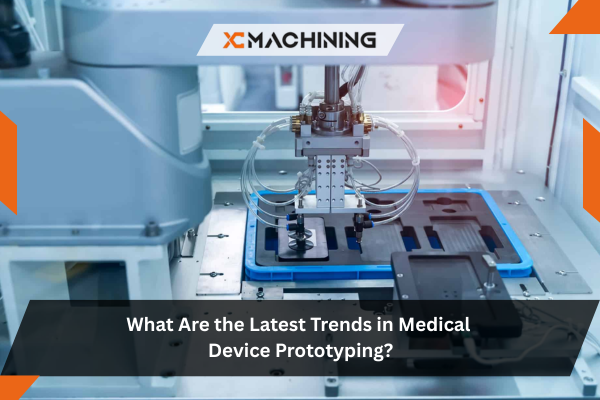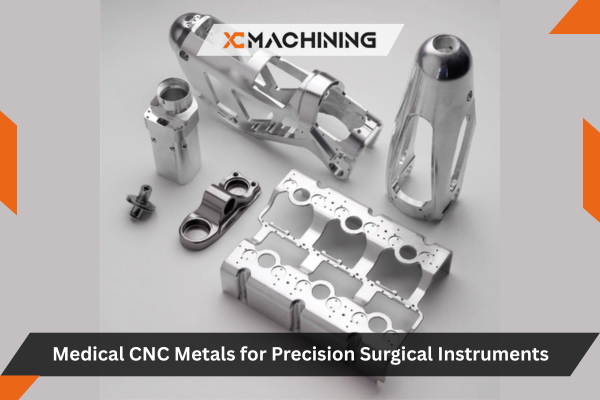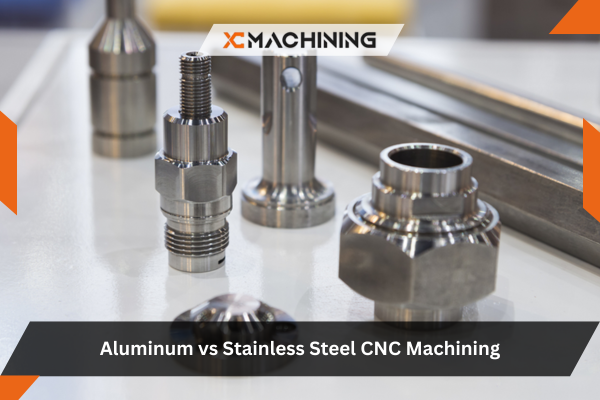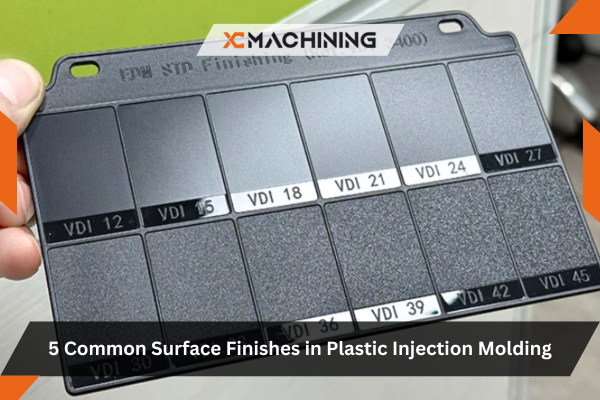If you’re following the world of healthcare innovations, you might be asking, “What are the latest trends in medical device prototyping?” Perhaps you’re curious about quicker turnarounds, better materials, or faster ways to get ideas tested. You’ve come to the right place.
The biggest developments in medical device prototyping revolve around advanced manufacturing (like 3D printing), new materials, AI-driven designs, and streamlined regulations. These improvements are helping teams create safer, more sustainable devices while lowering costs and expediting the journey from concept to patient care.
From rapid printing methods to virtual simulations, this article will walk you through the emerging trends shaping medical device prototyping. We’ll look at digital tools, evolving regulations, eco-friendly options, and more. Let’s dive in!
Medical Device Prototyping: Where Innovation Begins
Dramatic breakthroughs start with medical device prototyping. It’s where engineers test bold concepts and refine them for real-world use. By building early models, developers identify flaws before mass production. This saves time and ensures patient safety. Passionate, creative collaboration in research labs propels every promising medical tool worldwide into existence.
Embracing Rapid Iteration
Rapid iteration is vital in medical device prototyping. Engineers produce versions in a short span, evaluating each design for flaws or improvements. This approach lowers risk, fast-tracks regulatory approvals, and keeps patient safety at the forefront of every development stage.
Smaller, smarter devices dominate healthcare, from insulin pumps to cardiac monitors. Medical device prototyping embraces miniaturization to improve patient comfort and mobility. Engineers integrate sensors into compact enclosures for tracking. By reducing size, these prototypes fit seamlessly into everyday life.

Miniaturization And Wearables
Sustainable Material Choices
Plastic waste concerns are driving innovation in medical device prototyping. Developers explore biodegradable plastics, plant-based composites, and recycled metals to reduce environmental footprints. This trend aligns eco-friendly goals with healthcare’s mission, ensuring that groundbreaking treatments do not harm the planet.
Accelerated 3D Printing Approaches
In recent years, 3D printing has become a top choice for medical device prototyping. Faster printers can now create complex models overnight, allowing teams to iterate designs quickly. This newfound speed helps doctors and engineers gather feedback sooner, cutting months off traditional development timelines.
Advanced printing materials have also expanded. From biocompatible resins to metal powders, these resources open doors for intricate parts that meet strict medical standards. Plus, multi-material printers enable single-pass builds with flexible and rigid sections. The result is a prototype that accurately simulates the real device, ensuring comfort, functionality, and regulatory compliance. Such advancements keep pushing boundaries, giving patients quicker access to life-changing solutions.
Virtual Reality And Simulation Tools
Virtual reality (VR) is revolutionizing medical device prototyping by simulating how a device interacts with the human body. Developers can visualize internal structures, test motion pathways, and anticipate stress points long before fabricating a physical model. This technology improves design precision and reduces wasted materials.
Engineers now use VR headsets to walk inside complex assemblies. They inspect fits, measure clearances, and experiment with alternate component placements in seconds. Combined with real-time physics simulations, these virtual environments predict device performance under various conditions. That predictive power means fewer physical prototypes, speeding product development and lowering production costs. This holistic approach helps diverse teams refine designs rapidly without risking patient safety.
AI-Driven Design Optimization
Artificial intelligence is fueling breakthroughs in medical device prototyping by automating design optimization. Algorithms analyze thousands of variations to identify the best shape, size, and material properties for a specific function. This data-driven process speeds innovation and delivers prototypes that stand up to rigorous testing faster than ever.
Engineers feed relevant parameters into AI models, such as targeted usage scenarios or mechanical stress limits. The system then suggests designs that meet those specs without excess bulk. This predictive power yields lighter, stronger prototypes that mimic final products more closely. The overall result? Refined concepts that reduce costs and protect patient well-being. In short, AI shapes tomorrow’s devices in brilliant ways.
Regulatory Sandboxes And Testing Protocols
Medical regulators recognize how fast technology changes. They’ve introduced “sandboxes” where medical device prototyping can proceed under relaxed rules for testing and validation. This controlled environment lets developers gather real-world data without extensive delays. Early feedback then informs device safety, effectiveness, and essential documentation for formal regulatory submissions.
In these sandboxes, experts examine prototypes for potential hazards. They also assess software reliability and electromagnetic compatibility, especially when connected devices share data wirelessly. This open dialogue between innovators and regulators paves the way for smoother approvals. By tackling compliance issues upfront, teams can confidently launch prototypes that prioritize patient well-being. Faster, safer development cycles ultimately bring beneficial treatments to market faster.
Open-Source Collaboration
Open-source projects aren’t just for software anymore. Within medical device prototyping, global teams unite to share designs and breakthroughs under open licenses. This collective effort reduces duplication of research, accelerates innovation, and widens access. Startups and universities alike can jump in, refining designs together for maximum patient impact.
Developers often upload CAD files and instructions on public forums. Others iterate quickly, testing versions in real clinics or maker spaces. By pooling expertise, open-source communities break down barriers that once slowed improvements in specialized equipment. Everyone benefits from a broader pool of knowledge, turning promising prototypes into global healthcare solutions without heavy licensing fees. Collaboration accelerates changes that improve patient care.
Point-Of-Care Manufacturing
Hospital-based labs now have small 3D printers and machining tools to create prototypes on-site. This point-of-care approach elevates medical device prototyping by letting clinicians rapidly test ideas and adapt treatments. Instead of waiting on suppliers, teams iterate quickly and tailor solutions to each patient’s unique requirements.
Surgeons sometimes print patient-specific anatomical models to plan procedures. Technicians assemble custom braces or implants within hours rather than weeks. By shrinking the production gap, hospitals can respond to evolving conditions more effectively. This strategy lowers costs associated with unused inventory. It also fosters immediate feedback loops, further refining prototypes before widespread implementation. Ultimately, point-of-care production personalizes treatment, cutting lead times dramatically for patients.
Biocompatible Polymers And Metals
Material choices in medical device prototyping are evolving. Biocompatible polymers like PEEK and medical-grade silicone reduce the risk of rejection or contamination. Titanium and cobalt-chrome alloys offer strength without excessive weight. Such materials pass strict tests for sterilization, ensuring prototypes can withstand real hospital environments while preserving patient health.
Engineers factor in temperature resistance, tensile strength, and chemical compatibility from the start. By selecting the right alloy or polymer, they minimize design tweaks down the line. This targeted approach delivers prototypes that closely mirror production units, letting doctors trial them confidently. Every iteration refines shape, function, and overall reliability for ultimate patient benefit. Superior materials translate into safer healthcare solutions.
Enhanced Software Integration
Modern CAD tools now link directly with simulation modules, streamlining development from concept to test. Designers fine-tune part geometry, then switch seamlessly to stress analysis. This integrated workflow identifies weak spots earlier, preventing last-minute redesigns. By centralizing data, engineers collaborate efficiently, speeding overall development cycles.
Some platforms even incorporate version control systems, tracking every design change. This level of detail helps regulatory submission later, as teams demonstrate thorough testing and adjustments. Automatic file syncing ensures no one works with outdated specs. By merging design and documentation, software integration drives accountability and clarity, ultimately elevating prototype quality in life-saving devices. Collaboration becomes smoother, ensuring prompt results for medical breakthroughs.
Digital Twins And Predictive Analytics
Digital twins create virtual replicas of medical devices, reflecting every detail of their physical counterparts. Engineers run simulations on these twins to understand how changes in design or materials might affect performance. This modeling cuts down on guesswork, ensuring that final prototypes align closely with intended real-world functions.
Predictive analytics then leverages device usage data and patient profiles, forecasting wear rates or stress points before manufacturing begins. By refining a digital twin, teams reduce iteration cycles and lower production waste. As more data pours in from clinical studies, these analytical models become sharper, providing ever-more accurate insights for safer, more effective medical products. This foresight drives decisions at every stage.
Multi-Axis Machining For Complex Shapes
Medical prototypes often contain intricate surfaces and tight tolerances. Multi-axis machining addresses these complexities by allowing cutters to move in four or five axes, shaping parts with greater precision. Curved surgical tools, custom implants, or multi-chamber pumps are produced more accurately and in fewer setups, saving time and resources.
Advanced CNC programming lets engineers simulate each cutting pass, verifying angles and toolpaths. This careful planning prevents collisions and wasted material. Because multi-axis methods eliminate extra repositioning, the final parts exhibit consistent quality in key functional areas. Additionally, faster machine cycles reduce overhead costs, enabling teams to invest more resources into further research and iterative design. Precision leaps forward with ease.
A Handy Comparison Table For Techniques
Let’s compare common prototyping techniques used in healthcare. This table highlights features, cost considerations, and lead times. Use it to decide which approach best suits your exciting next project. Clarity ensures confident design decisions.
| Technique | Main Advantage | Approx. Cost | Typical Lead Time |
|---|---|---|---|
| 3D Printing | Quick turnaround for complex geometry | Low to moderate | 1–7 days |
| CNC Machining | High precision, suitable for metals | Medium to high | 2–10 days |
| Silicone Molding | Great for small batches, flexible materials | Moderate | 7–14 days |
Selecting the right technique depends on budget, complexity, and intended materials. Combining methods may yield the best outcome, especially when prototypes demand both high detail and mechanical strength. Tailor each approach.
Cybersecurity In Connected Prototypes
Connected devices gather patient data, so cybersecurity is no longer optional. During early prototyping, developers must embed encryption, secure boot protocols, and authentication measures. This approach ensures a safe data flow when the final device hits the market. Any breach can undermine trust and put patient information at risk.
Security audits also evaluate hardware vulnerabilities, such as exposed ports or tampering risks. Developers simulate potential attacks to see if data can be intercepted or altered. Addressing these findings early prevents costly redesigns down the line. Ultimately, robust cybersecurity fosters confidence among doctors, patients, and stakeholders, ensuring connected prototypes truly serve their intended medical purpose. Vigilance preserves both innovation and safety.
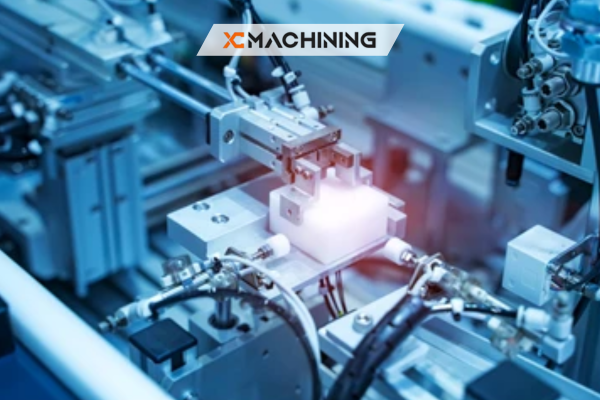
Conclusion
Medical device prototyping has evolved into a rapid, highly collaborative process driven by advanced materials, automation, and global cooperation. From 3D printing to multi-axis machining, each innovation refines the path from concept to clinic. Developers can now test devices faster, address regulatory concerns earlier, and explore new frontiers in personalized care. By embracing sustainability and cybersecurity from the start, teams ensure their prototypes align with modern values and patient safety. As these trends continue to mature, medical breakthroughs will keep arriving at record speed. In short, the future looks bright for anyone pushing the boundaries of healthcare design. Stay inspired.
FAQ
Q: Why is speed so crucial in prototyping medical devices?
Speed reduces the overall development timeline and enables quicker feedback from clinicians. Faster prototypes let teams catch errors early, avoiding large-scale manufacturing mishaps. This agility helps new treatments or tools reach patients significantly earlier than before.
Q: Do advanced materials significantly impact device safety?
Materials like titanium and PEEK offer biocompatibility and strength, reducing the risk of rejection. Their durability ensures devices withstand sterilization and frequent use. Choosing materials lowers failure rates and improves outcomes for clinicians and patients.
Q: How do regulatory sandboxes help innovators?
They let developers test concepts under relaxed rules, collecting performance data. Spotting design flaws early lowers rework. These controlled environments also spark cooperation with regulators, ensuring prototypes meet guidelines while cutting the time to approval.

